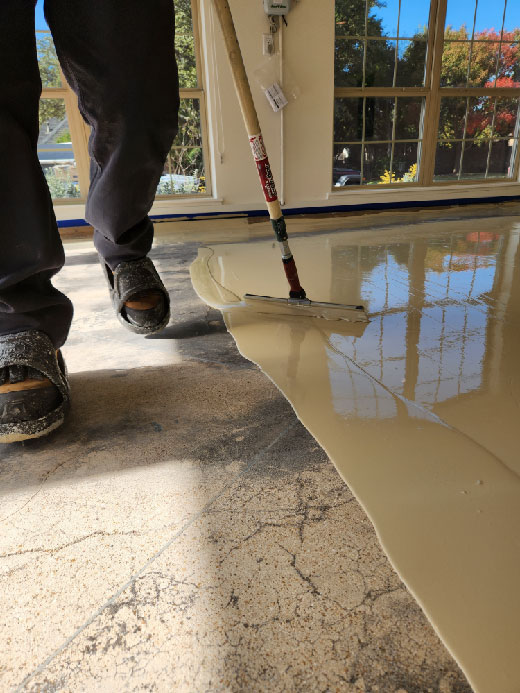
Are you bored with your dirty and stained garage floor? It’s time to make it look new again! When you want to make your garage floor better, you might have heard about something called polyaspartic floor coating. But what is polyaspartic, and how is it different from the regular epoxy coating? Let’s learn about floor coatings and find out the good and bad things about polyaspartic floor coating.
While DIY kits exist, achieving the flawless finish polyaspartic promises requires the touch of a skilled professional.
Polyaspartic coatings might dent your wallet a bit more upfront compared to epoxy coatings, but their resilience and prolonged life span can make them a worthwhile investment.
*With MygarageFloors.com you can save up to 50% of your polyaspartic floor coating cost.
Applying polyaspartic involves meticulous timing and precision. It might be a tad tricky for the uninitiated DIY enthusiast.
If not managed properly, polyaspartic can react differently based on varying temperatures during application, affecting the final outcome.
Imagine applying a coat today and parking your car back tomorrow. Polyaspartic coating’s superpower lies in its rapid curing time. It dries in a matter of hours, allowing you to reclaim your garage space sooner.
Polyaspartic is not just a pretty coating; it’s tough as nails. It resists scratches, impacts, chemicals, and UV rays with remarkable finesse. Your garage floor will stay impressive for years to come.
Other people that read this also read this guide: How to clean your garage floor
Do you envision your garage as more than just a storage space? Polyaspartic offers a spectrum of finishes, from high-gloss to satin, transforming your floor into a visually stunning masterpiece.
One of polyaspartic’s secrets to longevity is its exceptional adhesion to concrete. Say goodbye to peeling and flaking floors – polyaspartic sticks around for the long haul.
Whether you’re facing a blistering summer or a freezing winter, polyaspartic takes it all in stride. Its resistance to temperature extremes ensures your floor won’t crack or warp.
Worried about noxious fumes? Polyaspartic coatings boast low Volatile Organic Compound (VOC) content, making them an environmentally friendly choice for indoor spaces.
The garage is a haven for chemical spills and oil drips. Luckily, polyaspartic coatings fend off stains, simplifying cleanup and maintenance.
Going green? Polyaspartic coatings align with eco-consciousness due to their low VOC content and reduced environmental impact.
Polyaspartic can be applied throughout the year, regardless of the season. No need to wait for optimal weather conditions.
Mygaragefloors.com is an online platform with in-house installers dedicated to helping homeowners upgrade their garage floor with a superb Polyaspartic floor coating at the lowest price in the nation.
Stop wasting time on sales meetings.
Save your time and avoid their commission. Get your garage floor coatings installed today at the lowest price.
Check pricing
469-990-9990
Mygaragefloors.com is an online platform with in-house installers dedicated to helping homeowners upgrade their garage floor with a superb Polyaspartic floor coating at the lowest price in the nation.



Lots of companies claim to use Polyaspartic, but they only apply it for the final coat.
Using a mix of Epoxy or Polyurea for the base coat can lead to yellowing and peeling over time.
Insist on a full Polyaspartic system for both base and top coats.